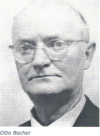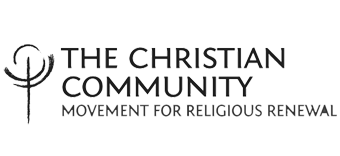Latest News
Kitchen Chat and more…
Kitchen Chat and more…
“Peace be with you!’
And while He said this, He showed them His hands and His side.” (John 20:19-20)
Christ is the God with the wounds.
If there is anything that distinguishes Him from all beings in heaven and on earth it has to be the wounds in a perfect resurrection body. Wounds are plentiful among people on earth—but no human being on earth is yet risen. Countless deceased rose after Easter—but no deceased has wounds like His.
To demonstrate to his unbelieving followers that this is His identifying mark, Christ shows them His hands and His side. If that does not suffice, they may touch His wounds.
Hundreds of years later St. Francis sees in a vision an overwhelming light figure that tells him he is Christ. St. Francis looks right through the impressive figure and says: “My Lord is lowly in appearance. Show me your wounds.” Thereupon the devil flees, who for the occasion had shown himself like a wolf in sheep’s clothes.”
Christ is the God with the wounds. When He shows His wounds the words always sound: “Peace be with you.” When we hear these words at the altar He wants to let His breath stream into us to recreate us in His image and likeness. His peace is not of this world. He has wrested Himself free of pain, of death, and of demons. This most precious gift of life out of death He wants to share with us, so that we bear His peace in us—even in a world of pain, death, and demons.
Rev. Bastiaan Baan, April 16, 2023
Die Gruender der Christengemeinschaft: Ein Schicksalsnetz
By Rudolf F. Gaedeke
Translated by Cindy Hindes
OTTO BECHER
January 26, 1891, Holzminden/Weser – July 19, 1954, Pforzheim
 When Otto Becher died after a severe operation in Pforzheim on July 19, 1954, another of the founders of our earthly work was lost. He was sixty-three. What he had given shone as a special color in the picture of the first decades.
When Otto Becher died after a severe operation in Pforzheim on July 19, 1954, another of the founders of our earthly work was lost. He was sixty-three. What he had given shone as a special color in the picture of the first decades.
Otto Becher was born in Holzminden/Weser on January 26, 1891. He grew up in this landscape of old Carolingian spirituality near the Corvey monastery. His mother, Anna, died early. His father Emil was pious, with a personality of positive faith. His son admired him very much, even though later in his studies, Otto Becher belonged to the most radical wing of critical theology.
Something particularly straightforward lived in Otto Becher, in his whole being, but especially in his thinking and judging. “In the service of that which was recognized as true and that which was felt to be sacred, he consumed himself completely with those powers which were at his disposal.” — that was how his friend Rudolf Meyer described it.
Initially, Otto Becher had worked in Leipzig with Wilhelm Wundt in the Psychological Seminar. Then he moved to Göttingen to study the strictly phenomenological direction of Edmund Husserl. Studies in the philosophy of religion and the pedagogical seminar with Professor Arthur Titius revealed Becher’s talents so strongly that Titius invited him to teach with him. But the twenty-four-year-old refused. His honesty in discernment forbade him to pass along what was traditional and dogmatically obscure. But he studied intensively; he received a scholarship and was allowed to live in the Theologischen Stift. His external needs were always modest. When Rudolf Meyer met him in 1915, he was like a monk in his cell—but embracing all cultures in spirit.
During their heated discussions and conversations ‘in his cell’ about Julian the Apostate, the phrase emerged: “What you are looking for could be called, in the sense of Goethe, the cross entwined with roses.”
This appealed to Otto Becher in the depths of his soul, after which the friends sought Goethe’s poem “The Mysteries”; it described how Brother Mark finds the gate of the Brotherhood of the Rosicrucian.
Rudolf Meyer had found his way to anthroposophy in 1916. He had heard that at the first Goetheanum building, a stage curtain was planned to show an image of the motif of Brother Mark finding the Rosicrucian Gate. Otto Becher was horrified that his friend was getting involved in such fantastic things as anthroposophy. Nevertheless, he began to familiarize himself with the new spiritual science and subsequently became a thorough connoisseur and exponent of anthroposophy.
It was clear to Otto Becher that he could not take on any position as pastor or lecturer. So he first worked as a house teacher at the Silesian castle of Lubowitz near Ratibor, from which Josef von Eichendorff came, then with Stegemanns at Gut Marienstein, north of Göttingen. He also worked for a time as an educator with Paul Geheeb at the ‘Odenwaldschule’.
When the very first circle of eighteen students gathered with Rudolf Steiner for the June Course in Stuttgart in 1921, Otto Becher was among them. For him, the consequence was to withdraw from his spiritual-scientific studies and turn to the work of religious renewal. Four months later, he attended the Autumn Course for theologians in Dornach and expressed his will to cooperate, even though he thought he had only weak forces. From May 1922, he prepared the foundation of a congregation in Breslau.
In the Breitbrunn photo, we see him standing in the middle next to Pastor Karl Ludwig. Compared to the youth of most of the participants, both were already more mature professional men. Emil Bock ordained Otto Becher in Dornach on September 16, 1922, the day of The Christian Community’s founding.
After the Dornach events, Otto Becher founded the congregation in Hannover together with Claus von der Decken. But he remained there only a year and then, at Rudolf Meyer’s request, worked in the Görlitz congregation.
This circumstance made it possible for him to attend the conference at Koberwitz Castle near Breslau from June 7-16, 1924, where Rudolf Steiner held the agricultural course that spiritually founded the biodynamic way of farming. A small insignificant episode has come down to us from those days, but it characterizes Otto Becher’s poverty and frugality. On the daily train ride from Breslau to Koberwitz, a lady noticed that Otto Becher was wearing no socks and completely worn shoes despite the wet and cold weather. She immediately made sure that he received what he needed as a gift.
In October 1924, Otto Becher, at the age of thirty-three, took up his work in the Pforzheim community. It had been founded by Walter Gradenwitz, who then worked with him for some time.
For over thirty years, he built up and maintained the congregation in Pforzheim. Of benefit was his comprehensive education in many areas, his pedagogical experience in religious education for children and youth work, but above all, his spiritually clear and modest, engaging, friendly manner.
Although Rudolf Meyer had repeatedly asked him to write, he did not publish any of his work. A wealth of manuscripts were confiscated by the Gestapo when The Christian Community was banned, and he was taken into custody for three weeks. During the time when the Christian Community was banned, he worked as a secretary in Herbert Witzenmann’s metal tube factory.
Apart from Pforzheim, he gave lectures in only a few towns in Baden. According to the judgment of his colleagues, these were true gifts of the spirit.
With his commitment as a member of the board of the school association, he promoted the founding of the Pforzheim Waldorf School. He was wholeheartedly involved in the work of the branch of the Anthroposophical Society. In addition, he was a well-known personality in that town, which on February 23, 1945, had been so severely hit by the war.
So it was natural that at Becher’s death, the mayor wrote a heartily cordial letter and that the newspaper paid detailed tribute to his work in the city.
Perhaps two things characterize Otto Becher best: The topic of his last series of lectures in the congregation was: “The Work of Christ in the Intellectual History of the Occident.” His innermost concern was to trace Christ’s activity discerningly and serve Him in worship. And secondly, he was like a secret knight who sensed his proper hour approaching. Thinking of repeated earth lives, he himself considered his rich working life only as a preparatory incarnation.
He cared for the renewed sacraments as a priest for thirty-three years.
226 Otto Becher
MEMORANDUM
For a long time I had the feeling that the will for a religious renewal, which had begun to flow at our first course in Stuttgart in June, had since then increasingly moved from the practical-religious to the theoretical-theological and thus threatened to peter out. Through Mr. Rudolf Meyer and Mr. Borchart, I have now been informed that many of us course participants have become aware of this and have decided to call for the purification of the original impulse through explanations.
I hereby join these rallies. Even if, on the one hand, the whole magnitude and gravity of our task cannot be brought seriously enough into consciousness, and the inadequacy of one’s own powers, measured against the task, is experienced in a particularly deep and painful way, I nevertheless believe that it is precisely the cliff of hidden egoism that is avoided if, trusting in the soul-strengthening and enriching effect of the spiritual knowledge that Dr. Steiner has made accessible to us, one courageously begins with practical religious work. Personal imperfections are certainly best overcome in spiritual-religious action and life itself. It is foreseeable that from the beginning of our practical work, all means will be used to fight against us. However, I now believe that a preceding public theoretical propaganda in the theological world will rather aggravate than alleviate the conflict with it. For the confession of the Spirit is, after all, ultimately a matter of will. Yes, there is a danger that our impulse will be stifled by the agitation of the press if the public learns of our will sooner than it has become action. Furthermore, it should be noted that the economic possibilities of church planting are only getting smaller and smaller, and that the financing of our movement can only really start to flow after the practical work has begun. First the spiritual reality must be really experienced, if Impulse is to awaken in the people, which help to carry and spread the religious movement. The how of starting would have to be clarified quite soon in a meeting and to ask Dr. Steiner to give us further advice in this direction.
On the question of the leadership of our movement, I would only like to emphasize here that the spiritual freedom, the initiative, and the sense of responsibility of the individual co-workers must not be impaired in any way. The ideas of threefolding will have to guide us in this.
Finally, I declare that I am willing to use my weak forces for our practical-religious goals as soon as I am free in my line of work, which will probably be the case at the beginning of June.
Otto Becher
Marienstein, February 22, 1922.
TWO TEXTS BY OTTO BECHER
This is the course of the great development of the world and of mankind: The power of the gods slowly becomes – from embodiment on earth to embodiment on earth – the power of the human being himself. Only in the distance from the gods can the human being develop independence, and only here can spiritual love arise from freedom and grow stronger. The earth is the place of the unfolding of the human ego and the human community. The true new community is based on the voluntary sacrifice of the strong. People who have awakened to the “I” are free to unite in the service of hatred and destruction, of the massification and disenchantment of the human being, or for his liberation and exaltation, for true humanity. To this kind of union above the word of Christ applies: “Where two or three are gathered together in my name, there am I in the midst of them.” And Paul writes to the Colossians “When Christ comes to be revealed, you also will be revealed with him.” Thus the human being experiences himself as a germinating force for a new humanity and a new earth … The development of the will must not take place without transformation and healing; there must be a readiness to receive the divine power of grace, as in the archetype of Mary, but also of Mary Magdalene. Again and again we must become aware that we can “do no works” before God. All talents have an antisocial effect as long as they are not transformed and put at the service of Christ. Not paralysis, but highest increase of impulses is connected with it; now our goals become the world goals, and the world goals become our goals. The spiritual nobility of a true priestly royalty then moves into our souls.
Today, the anxious concern is everywhere: How will a peaceful cultural construction such as this be possible? The right bringers of peace can only be those who are inflamed by true Christian impulses. A true Christian community is called to carry out into the world the new angel’s work: “Peace on earth to men of good will.
FROM THE “PFORZHEIMER KURIER” OF JULY 21, 1954:
Pastor Otto Becher died.
The Christian Community of Pforzheim lost its pastor.
Unexpectedly and suddenly, the Christian Community in Pforzheim lost its highly honored pastor, Pastor Otto Becher, after a brief serious illness. On October 31 of this year, it would have been three decades that Pastor Becher had ministered here. Born on 26.1.1891 in Holzminden, he first enjoyed a humanistic education and then studied theology and philosophy in Göttingen and Leipzig. At the age of thirty he came to anthroposophy as a constant seeker, but then found inner clarity and from this became the co-founder of the Christian Community in Germany already one year later. When he came to Pforzheim after another two years, he had soon settled in and devoted himself to this city and the circle of people he pastored with all love and intensity. His greatest and most prominent concern was to work out of silence. For the Pforzheim congregation his passing means an irreplaceable loss, since it revered him not only as a faithful intimate pastor, but also as an outstanding scholar of the humanities, as a joyful, life-loving artist, and as an excellent organizer with a talent for improvisation that was peculiar to him.
Do not put your efforts into acquiring the perishable nourishment, but the nourishment which endures and leads to imperishable life. The Son of Man will give it to you. (John 6:27)
If there is anything that binds us to the earth, it is eating and drinking. We have hardly satisfied ourselves, and hunger and thirst are back again. They accompany our earthly life from our first breath to the last, not only in the literal but also in the figurative sense of the word. The thirst for existence is never quenched. Even when we have died, this thirst sooner or later brings us back to the earth, where we still have something to do.
Hunger and thirst also accompanied the life of Jesus Christ on earth. “I thirst”—it was one of the last words on the cross. With this prayer and the bad aftertaste of a bitter beverage He died. But also after His resurrection His hunger and thirst burn for what only we can give Him. Someone once heard Him say: “I am thirsty. I only have what I am given. I take nothing.” [*]
That is also His question to us in the enigmatic, contradictory words from the Gospel of John: “Do not put your efforts into acquiring the perishable nourishment, but the nourishment which endures and leads to imperishable life. The Son of Man will give it to you.” How can Christ ask us for something He Himself gives us?
In the language of the altar this gift, which He gives and asks at the same time, is called the communion. It is much more than a gift. It is also His entreaty: “What can you give me? Can you give yourself to me, now that I have given myself to you?”
Only if I give myself to Him is the meal He wants to share with us perfect. Only then is His thirst for our existence quenched.
–Rev. Bastiaan Baan, March 19, 2023
[*] Gabrielle Bossis, Jesus Speaking: Heart to Heart with the King, Pauline Books and Media.

